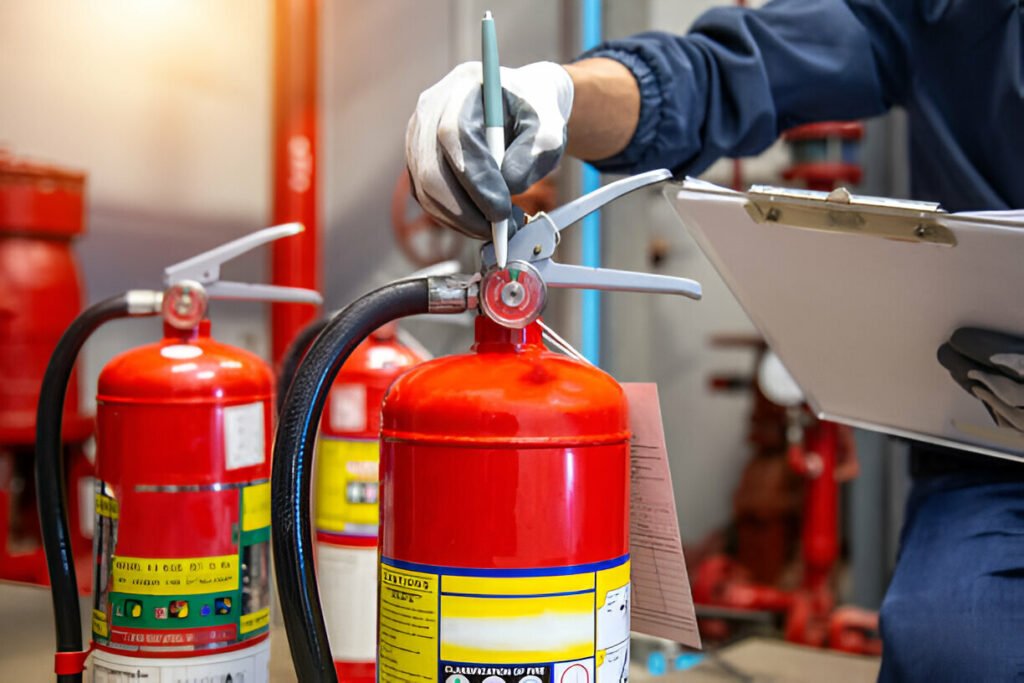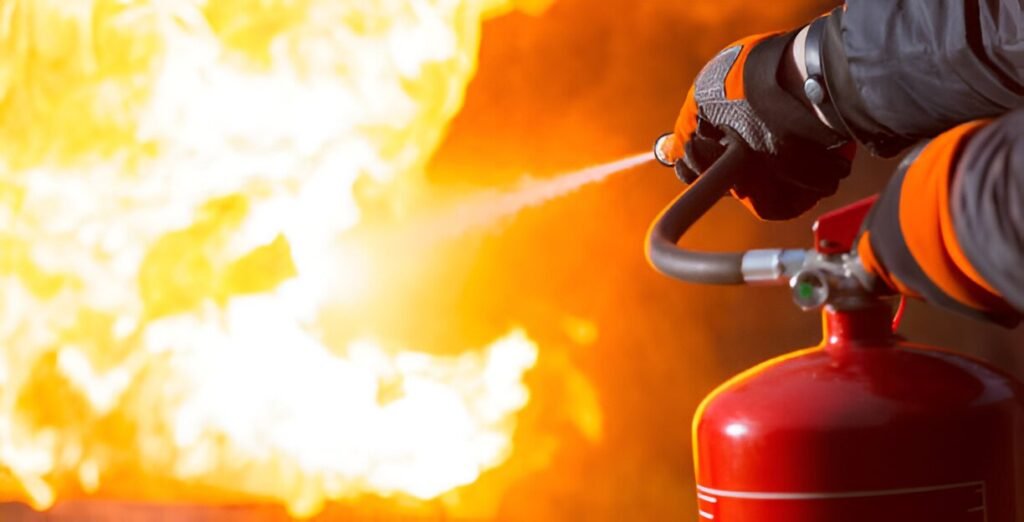Did you know that a significant number of fires in London’s commercial properties are due to human error or negligence?
As a safety professional, I can tell you that many of these incidents could have been prevented with a thorough fire risk assessment.
In the following discussion, we’ll explore what is the legal requirement for fire risk assessments in London. We’ll delve into the specific legal obligations and responsibilities for conducting these assessments. You’ll understand why they are not just a sensible safety measure, but a legal necessity for compliance and safety in London.
So, are you ready to discover more?
Table of Contents
Understanding: What Is the Legal Requirement for Fire Risk Assessments?
To fully grasp the importance of fire risk assessments, it’s crucial to understand that they’re systematic processes designed to identify, evaluate, and manage potential fire hazards and risks in a building. A thorough hazard identification is the first step in this process, focusing on fire sources, combustible materials, and ignition points.
Risk evaluation follows, determining the likelihood of a fire and its potential impact. The goal here is to prioritize risks and develop a strategy to manage them effectively. This strategy includes implementing safety measures such as fire alarms, suppression systems, and safe storage practices for flammable materials.
Emergency planning is another critical component. It involves designing evacuation procedures, communication plans, and training programs to ensure all occupants know what to do in case of a fire.
Lastly, but definitely not least, is meeting compliance requirements. These include local fire safety regulations, national standards, and industry-specific guidelines. Regular audits and reviews are necessary to ensure continued compliance.
Legal Framework and Regulations
Understanding the legal framework and regulations surrounding fire risk assessments is crucial for compliance and maintaining safety standards. These assessments aren’t optional; they form part of an organization’s legal obligations under various legislations, including the Regulatory Reform (Fire Safety) Order 2005 in the UK. Non-compliance brings serious repercussions, such as fines or imprisonment.
In essence, fire risk assessments involve a thorough risk evaluation of a premises to identify potential fire hazards. This includes looking at the building’s structure, the nature of work conducted within, and the materials present that could potentially fuel a fire. Once hazards are identified, appropriate safety measures are put into place to mitigate these risks.

Emergency planning is another crucial part of this regulatory compliance. A comprehensive emergency plan should outline clear evacuation procedures, designate safe assembly points, and detail the roles and responsibilities of staff during a fire incident. This plan should be communicated to all occupants of the building and regularly updated.
In a nutshell, understanding and adhering to the legal framework and regulations isn’t just about ticking boxes; it’s about ensuring the safety and wellbeing of all building occupants.
Conducting a Fire Risk Assessment
Conducting a fire risk assessment involves a meticulous process of identifying potential fire hazards, evaluating the risks they pose, and implementing measures to mitigate those risks. This process, known as risk evaluation, is a critical part of ensuring safety in any building.
The assessment process is typically carried out by trained assessment personnel, who are responsible for systematically going through the premises and identifying areas of concern. This could range from faulty electrical equipment to an accumulation of combustible materials.
Upon identifying these potential hazards, the next step is risk evaluation. Here, the likelihood of a fire occurring and its potential impact is assessed. This evaluation then guides the development of mitigation strategies. These strategies could include measures such as improving fire safety systems, increasing staff training, or removing the identified hazards.
Compliance responsibility rests on the shoulders of the building owners or managers. It’s their duty to ensure that assessments are conducted regularly and that the necessary changes are made to improve fire safety.
Fire Prevention and Safety Measures
In the ongoing battle against fire hazards, implementing robust fire prevention and safety measures plays a pivotal role in safeguarding people and property. Fire safety protocols serve as a critical guide for prevention strategies, dictating practices such as regular safety equipment maintenance, hazard identification, and emergency response planning.
Understanding the intricacies of these protocols can significantly reduce fire risks. Prevention strategies, for instance, may include the safe storage of flammable materials, proper disposal of waste, and adherence to strict guidelines regarding the use of electrical and heating equipment.

Moreover, hazard identification allows for the early detection of potential fire threats, ensuring immediate corrective action. It’s crucial to regularly inspect premises for fire hazards, including faulty electrical wiring, blocked fire exits, and improperly stored flammable substances.
Equally important is the maintenance of safety equipment like fire extinguishers inspection, fire alarms inspection, and sprinklers. Regular inspections and routine maintenance ensure these devices function optimally when needed.
Lastly, emergency response planning prepares everyone for the unfortunate occurrence of a fire. This involves creating a detailed evacuation plan, setting up assembly points, and designating roles during emergencies. Through adherence to these measures, we can effectively mitigate fire risks and ensure safety.
Training for Fire Safety Compliance
To ensure compliance with fire safety regulations, it’s essential to provide comprehensive fire safety training to all employees. Not just a one-time event, this training should be an ongoing process that covers compliance regulations, risk evaluation, emergency planning, and assessment procedures.
Fire safety training is critical in helping employees understand the risks associated with fire hazards, the steps to take in case of a fire, and how to prevent fires in the first place. It’s also a legal requirement in many jurisdictions, with penalties for non-compliance.
Let’s consider a brief overview of some key elements in fire safety training:
| Topic | Importance | Legal Requirement |
|---|---|---|
| Compliance Regulations | Helps ensure workplace safety | Yes |
| Risk Evaluation | Identifies potential hazards | Yes |
| Emergency Planning | Prepares employees for emergencies | Yes |
| Assessment Procedures | Teaches how to conduct assessments | Yes |
Consequences of Fire Incidents
While we’ve discussed the importance of fire safety training, it’s equally significant to understand the serious consequences that can occur if a fire incident happens.
Fire damage is one of the most immediate and visible consequences. It can lead to the loss of assets, infrastructure, and in severe cases, the destruction of an entire property. The health risks associated with fire incidents shouldn’t be overlooked either. Smoke inhalation can lead to long-term respiratory problems and even fatalities.
The financial impact of fire incidents is also profound. Beyond the cost of repairing the physical damage, there’s the loss of business due to operational disruptions. These disruptions can range from temporary closures to prolonged downtime affecting productivity.
The above scenarios underline the importance of safety measures. Robust fire safety measures can significantly reduce the risk of fire incidents, mitigating potential damage, health risks, and financial losses. These measures include regular fire risk assessments, appropriate fire safety training, and the implementation of effective fire control systems.
Frequently Asked Questions
What Are the Penalties for Non-Compliance With Fire Risk Assessment Regulations?”
Non-compliance with fire risk assessment regulations can result in serious penalties. These include hefty fines, imprisonment, or even closure of premises. Regulatory enforcement is stringent, so it’s essential to comply to avoid these consequences.
How Often Should a Fire Risk Assessment Be Reviewed and Updated?”
As a risk management practice, I’m required to review and update fire risk assessments regularly. This ensures regulatory compliance and optimizes safety measures. The exact review frequency can vary based on changes in the environment.
Who Can Legally Perform a Fire Risk Assessment?”
I’m legally allowed to perform a fire risk assessment if I have professional qualifications, use approved risk assessment tools, meet safety standards, manage assessment costs, and properly handle assessment documentation.
What Specific Steps Can Be Taken to Mitigate the Risks Identified in a Fire Risk Assessment?”
To mitigate risks identified in a fire risk assessment, I’d recommend smoke detector installation, strategic fire extinguisher placement, thorough emergency exit planning, use of fireproof materials, and regular maintenance checks.
What Role Does Employee Training Play in Fire Safety and Risk Mitigation?”
As an expert, I can’t stress enough how employee training in safety equipment use, emergency protocols, first aid, and evacuation drills is vital. Regular training frequency ensures fire safety and significantly mitigates risk in the workplace.
Conclusion
In conclusion, adhering to fire safety regulations isn’t just a legal requirement, it’s a crucial step towards safeguarding lives and property.
Conducting regular fire risk assessments, implementing safety measures, and providing proper training can significantly reduce the risk of devastating fire incidents.
Remember, ignoring these regulations can lead to hefty fines or even imprisonment.
Stay safe, stay compliant, and ensure you’re doing your part in creating a fire-safe environment.

